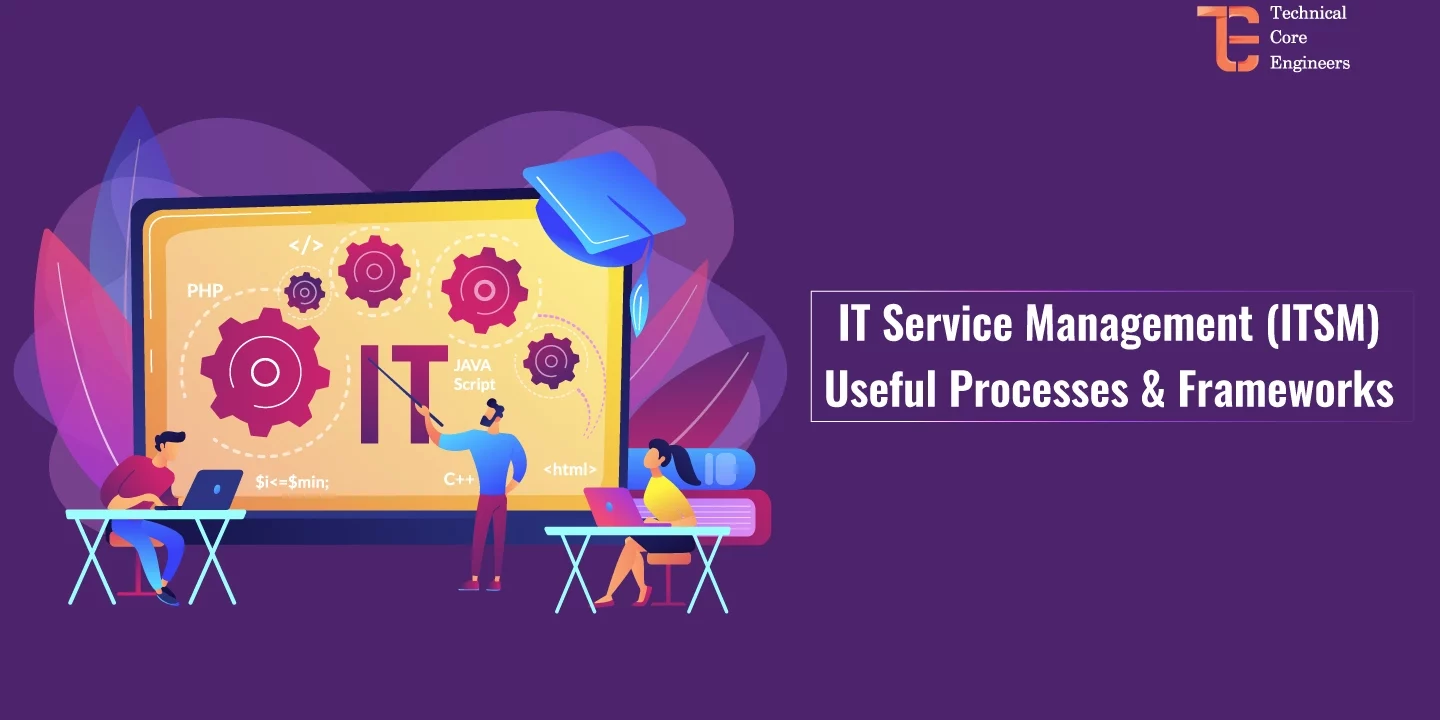- Home
- Web Development
- Project Management
- IT Service Management (ITSM): ...

IT Service Management (ITSM) and its useful process and framework. Technical Core Engineers disclose the whole process and benefits of this framework. So, Stick with us and explore more!
In today’s fast-paced digital world, organizations heavily rely on information technology to drive their operations, enhance productivity, and deliver seamless services to customers.
To ensure the smooth functioning of IT services, businesses need to adopt effective processes and frameworks. Additionally, This is where IT Service Management (ITSM) comes into play.
Furthermore, ITSM provides a structured approach to managing IT services and aligning them with business objectives. In this blog, Tecoreng will explore the importance of implementing effective ITSM processes and frameworks and how they can benefit organizations.
Importantly, Technical Core Engineers is the best web development company in India. Also, it is the best IT solution provider company based in Ahmedabad.
Understanding IT Service Management (ITSM)
ITSM encompasses a set of policies, procedures, and guidelines designed to manage the planning, delivery, operation, and control of IT services. Also, It focuses on establishing a proactive and customer-centric approach to IT service delivery, ensuring that IT services meet the needs and expectations of the business and its users. So, By adopting ITSM practices, organizations can improve service quality, enhance operational efficiency, minimize downtime, and foster continuous improvement.
There are many different ITSM frameworks available, each with its own set of processes and best practices. equally important, Some of the most popular ITSM frameworks include:
- ITIL (Information Technology Infrastructure Library)
- COBIT (Control Objectives for Information and Related Technology)
- MOF (Microsoft Operations Framework)
- ITSM4IT (IT Service Management for IT)
Also, The best ITSM framework for an organization will depend on its size, industry, and specific needs. However, all ITSM frameworks share some common goals, including:
- Improving the quality and availability of IT services
- Reducing IT costs
- Increasing IT agility
- Improving IT customer satisfaction
Benefits of Implementing ITSM Processes

a. Enhanced Service Quality
ITSM processes and frameworks enable organizations to define and standardize service delivery processes. By implementing consistent procedures, organizations can ensure that services are delivered reliably, meeting predefined service level agreements (SLAs) and customer expectations. This results in improved service quality and customer satisfaction.
b. Increased Operational Efficiency
ITSM promotes the automation and streamlining of IT processes, reducing manual effort and human error. It establishes clear workflows, assigns responsibilities, and enables effective communication and collaboration across different IT teams. So, These streamlined processes lead to increased operational efficiency, reduced downtime, and faster issue resolution.
c. Better Alignment with Business Objectives
ITSM frameworks, such as ITIL (Information Technology Infrastructure Library), provide a systematic approach to aligning IT services with the overall business objectives. By understanding the business requirements and priorities, ITSM helps organizations prioritize and deliver services that directly contribute to business success.
d. Improved Change Management
ITSM emphasizes effective change management practices, ensuring that changes to IT infrastructure, systems, or processes are implemented smoothly and with minimal disruption. By following established change management processes, organizations can reduce risks associated with changes, maintain service continuity, and ensure better control over the IT environment.
e. Continual Service Improvement
ITSM frameworks encourage a culture of continual service improvement (CSI). By regularly assessing service performance, identifying areas for improvement, and implementing corrective actions, organizations can achieve ongoing optimization of their IT services. in addition, This iterative approach leads to enhanced service delivery, increased efficiency, and a more responsive IT organization.
Implementing Effective ITSM Processes and Frameworks

To implement effective ITSM processes and frameworks, organizations should consider the following steps:
1. Assess the Current State
Evaluate existing IT service management practices, identify gaps, and determine areas for improvement. So, This assessment provides a baseline for designing and implementing ITSM processes.
2. Define Service Catalog
Develop a comprehensive service catalog that clearly defines the services offered, service levels, and associated support processes. equally, This helps establish a common understanding of services among IT teams and customers.
3. Adopt ITSM Frameworks
Consider implementing widely recognized ITSM frameworks such as ITIL, COBIT, or ISO/IEC 20000. So, These frameworks provide best practices and guidelines for IT service management, helping organizations align their processes with industry standards.
4. Establish Key Processes
Implement core ITSM processes such as incident management, problem management, change management, and service level management. Customize these processes to suit the specific needs of the organization while adhering to the best practices defined by the chosen framework.
5. Invest in Automation and Tools
Leverage ITSM tools and automation to streamline processes, improve efficiency, and enhance service delivery. As well as that, Automation can facilitate tasks like incident routing, self-service portals, and performance monitoring, enabling IT teams to focus on more strategic activities.
6. Foster a Service-oriented Culture
Encourage collaboration, communication, and knowledge sharing among IT teams. Develop a customer-centric mindset and promote a culture of continual learning and improvement.
Conclusion
Finally, Implementing effective ITSM processes and frameworks is crucial for organizations aiming to optimize their IT service delivery and align it with business objectives. By enhancing service quality, and increasing operational efficiency. equally, fostering continual improvement, ITSM enables organizations to effectively navigate the complexities of the digital landscape.
So, Embracing ITSM practices empowers businesses to deliver reliable and efficient IT services, thereby gaining a competitive edge in today’s technology-driven world.
Also, Don’t miss our social media platforms Behance and Dribbble.


